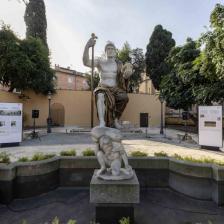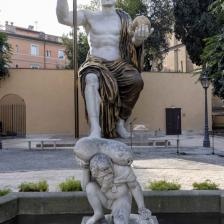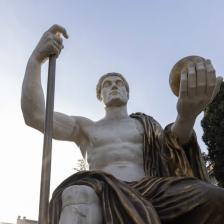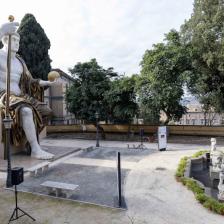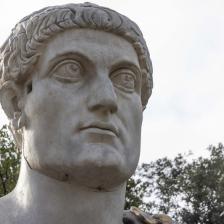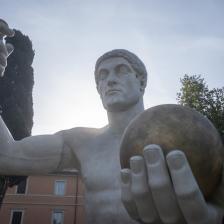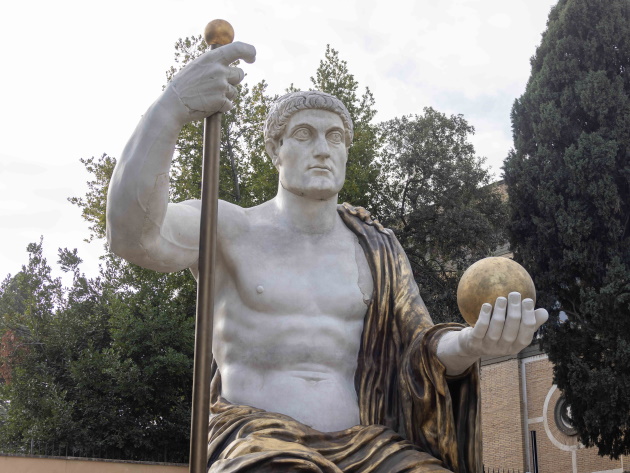
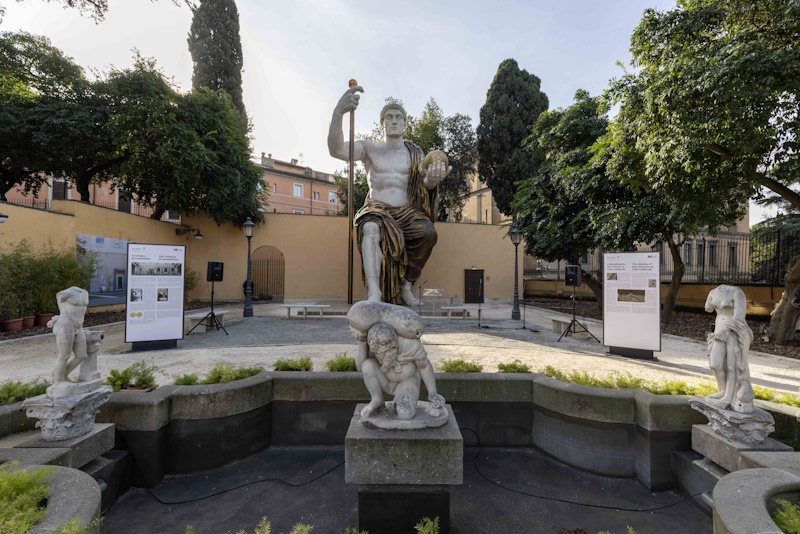
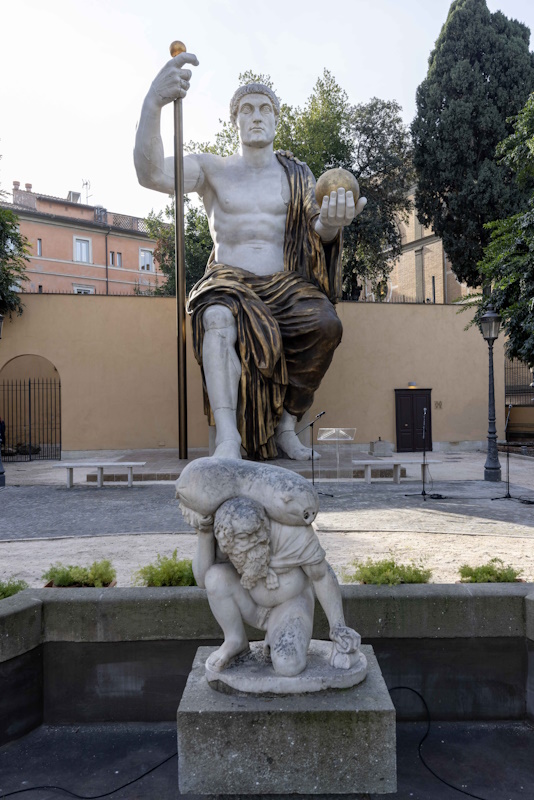
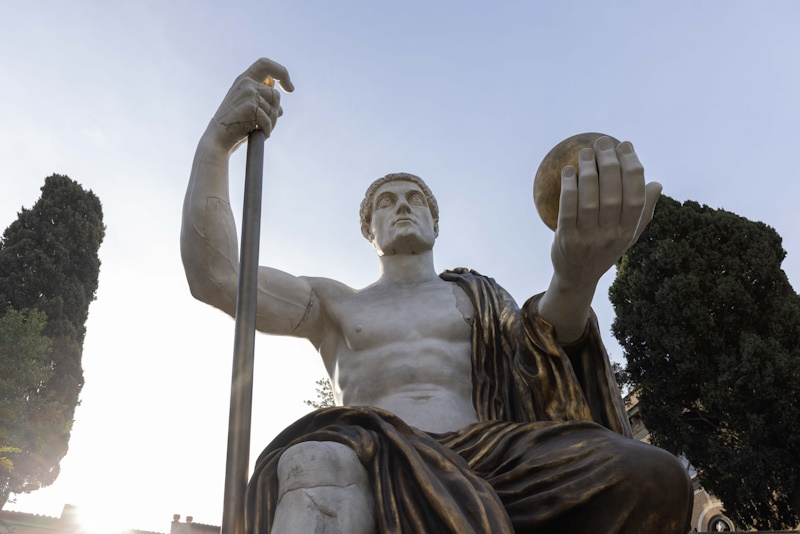
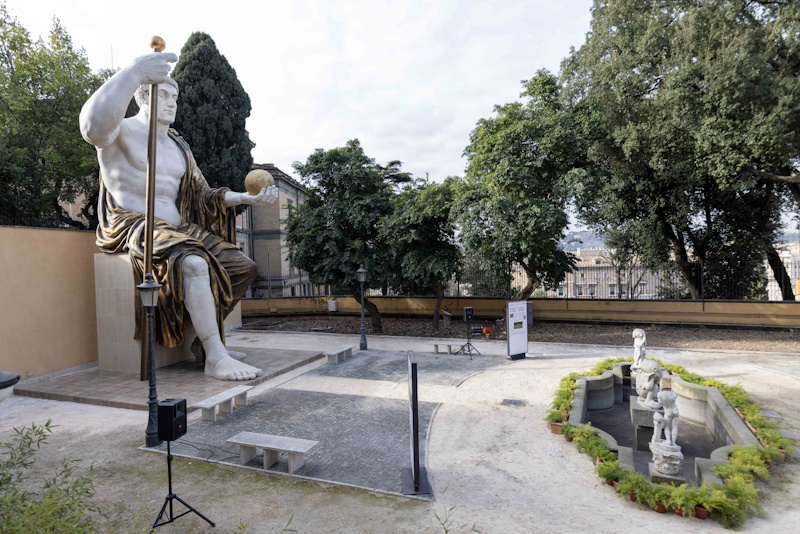
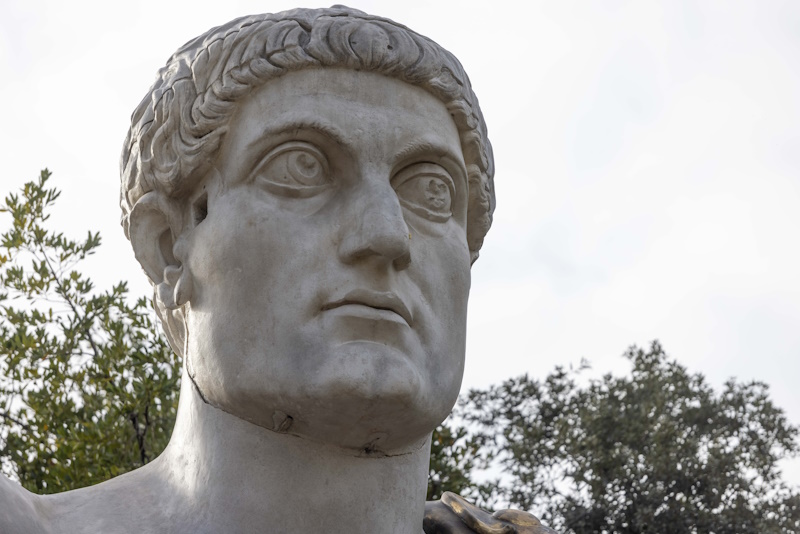
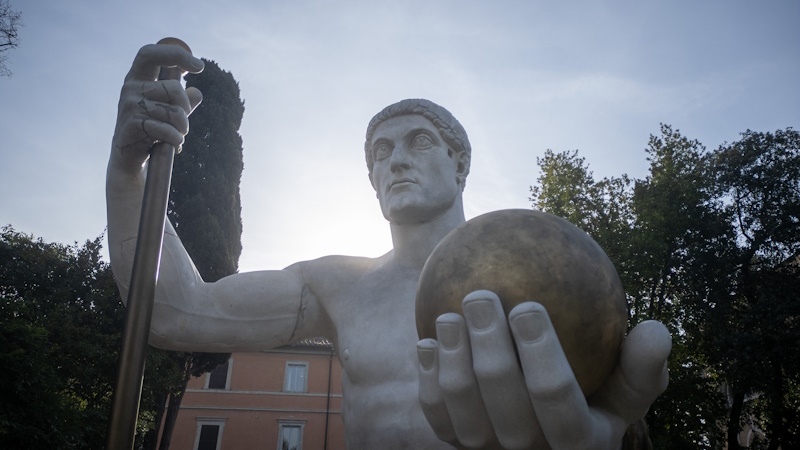
Housed in the garden of Villa Caffarelli in the Capitoline Museums, you can admire the striking reconstruction of the Colossus of Constantine, one of the most representative works of late antique Roman sculpture, created on a scale of 1:1, thanks to the in-depth study of literary and epigraphic sources and the nine surviving fragments of the grandiose original sculpture - head, right arm, wrist, right hand, right knee, right shin, right foot, left foot - preserved in the courtyard of the Palazzo dei Conservatori.
Approximately 13 metres high, the colossal statue of Constantine (4th century A.D.) depicts the emperor in the guise of a seated Jupiter, his body partially uncovered, a cloak over his shoulder, the globe in his left hand, and the sceptre in his right.
For the work's realisation, each fragment was modelled in 3D and placed on a digitally recreated statue using as iconographic traces some coeval specimens of similar workmanship and pose, such as the colossal statue of Jupiter (1st century A.D.) in the State Hermitage Museum in St. Petersburg, probably inspired by the Zeus of Olympia, the work of Phidias, and the large plaster copy of the statue of Emperor Claudius, portrayed as Jupiter, in the Ara Pacis Museum.
From the very High-Resolution 3D model, the Colossus was then physically reconstructed in resin and polyurethane, marble powder, gold leaf and plaster, resulting in an extremely detailed work in which you can distinguish the 'stitching' between the re-materialised parts and the copies of the original fragments.
The materials used were chosen to resemble marble and bronze; the internal structure - which was probably originally made of bricks, wood and metal bars - was made of aluminium, which can be easily assembled and removed.
Initially, the nine Parian marble fragments, found in 1486 inside the apse of what was believed to be Vespasian's Temple of Peace, but later identified as the Basilica of Maxentius along the Via Sacra, were thought to belong to a statue of Emperor Commodus. The fragments were then placed in the Palazzo dei Conservatori during some renovations based on a design by Michelangelo between 1567 and 1569. Only at the end of the 19th century were they attributed to the colossal portrait of the Emperor Constantine.
The tenth fragment, part of the thorax, found in 1951, will soon be transferred from the Parco Archeologico del Colosseo to the courtyard of the Palazzo dei Conservatori, next to the other pieces.
The project is promoted by Roma Capitale, Assessorato alla Cultura, Sovrintendenza Capitolina ai Beni Culturali and realised in collaboration with Fondazione Prada and Factum Foundation for Digital Technology in Preservation under the scientific supervision of Claudio Parisi Presicce, Sovrintendente Capitolino ai Beni Culturali.
The Capitoline museums
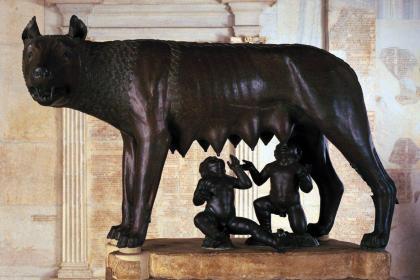
 Condividi
Condividi
Piazza del Campidoglio (The Capitoline Hill)

 Condividi
Condividi
Palazzo dei Conservatori
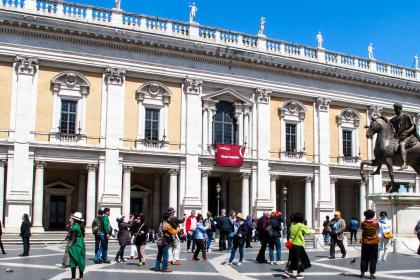
 Condividi
Condividi
Informations
From 6 February 2024
Daily from 9.30 to 18.30
 Condividi
Condividi













































